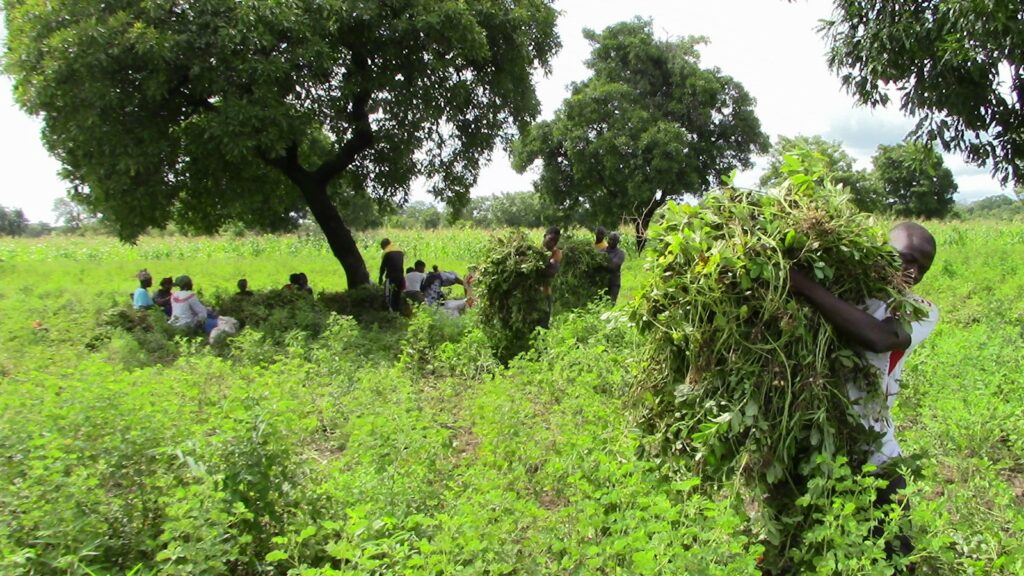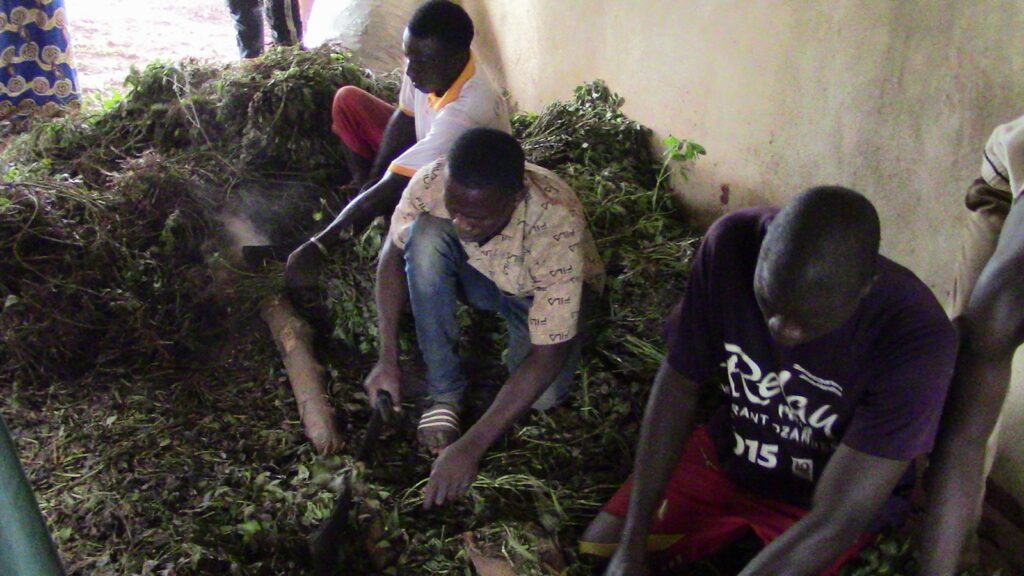
Youth Learn Silage Process with Peanut Material
Mar. 29 | 2022
Silage is used to preserve green matter for a longer period of time without jeopardizing the nutritional quality. In Mali and Burkina Faso this is an important technique for farmers to take advantage of their environment and provide reliable feed for their livestock. The silage can be preserved for times of the year when feed is hard to come by such as the dry season.
The Youth Entrepreneurs Association of Bougouni worked with volunteer Daniel Miller to produce their own silage. This process allows for youth to participate in the production process of raising livestock and possibly lead to them their own production process. The group harvested groundnuts (peanuts) and the haulms were used as the green material to produce the silage.
The Advantage of Silage
Wilting can be a method similar to silage, but it requires several hot, dry, sunny days to get the right outcome. But silage on the other hand only needs the humidity level to be about 65-70% or 30-35% of the green material to be dry. Silage is more accessible to farmers in this region of the world for this reason as green material is hard to come by when the dry season occurs.
The advantages of hay over silage include the preservation of nutritional value and the possibility of silage during the rainy season. For example, legumes carry many leaves when they are harvested for silage and are considered the most nutritional part. Being able to harvest the leaves when they are available is an important possibility to create silage for farmers. In addition, silage can be created from almost any material containing less than 50% dry matter. Some plants are better than others based on their soluble sugar content but with the right process, it can be just as successful.
To Make the Mixture
The process of creating silage is incredibly important as it determines the staying power of the product and the nutritional value. The green material must have an absence of oxygen therefore the bacteria will produce lactic acid from the sugars which will power the ph levels that the organisms responsible for the material to spoil will no longer be present. To guarantee the right balance within the silage four methods must be followed including the absence of oxygen, cutting the pieces properly, well packaged, and proper moisture content.
Once this process takes place of harvesting, possibly drying the material, cutting it into pieces, and packaging, the process moves into the fermentation stage. The fermentation process takes about one month, but if the period extends two or three months it increases the digestibility of the animal. This process guarantees the material to become more acidic, killing off bacteria, fungi, and molds. Some plants can be toxic in the case of cassava plants and through the process of fermentation it becomes safe to livestock.
Check out our blog where we discuss the process with cassava plants to increase the profitability of pigs here.
Finally, once it is ready to be given to the animal a farmer must consider how much is being fed to the animal and the exposure of the mixture to the outside world. Upon opening the container it should be given to the animals before bacteria begins to grow. Some farmers use a container that corresponds to the daily feeding needs of the animals which guarantees the least amount of spoilage of the silage especially after exposure to the sun. With a larger vessel where farmers are using a certain amount, a layer must be removed since it has been exposed to the air. After every day, the same amount of material should be removed to expose the new anaerobic layer.
The silage process is important for farmers to learn in Mali and Burkina Faso when livestock feed is scarce. Introducing it to youth passes a skill onto them to work with farmers and pursue work in the future of their own.





